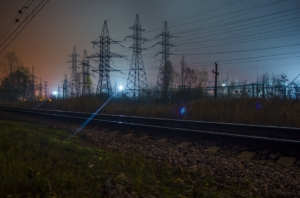The Engineer: A new brand of Superhero made for our times
As an old comic book collector, I loved Jeff Link’s article comparing the narrative of the superhero comic to the prevailing uncertainties of our time. For me, superheroes have been saving the world since the arrival, inception, or concept of the comic book. (https://www.autodesk.com/redshift/resilience-planning/)
Today, rather than garbed in capes, masks, or fabulously colored costumes, superheroes are dressed like you or me, in ties, suits, and/or jeans. And yes, like the rest of us, most are concerned about our rapid environmental change or aging infrastructure. Where are they different? Today’s superheroes work daily on finding engineering solutions to environmental and infrastructure problems. Let us introduce the advocates and contributors for change: Engineers! Some may say they are advocates and contributors to bettering the world, others may even say their superpower is shapeshifting the realms around us.
As Link notes, today’s issues are very different from The Great Depression of Superman’s time. In the latest superhero blockbusters, we are facing the archenemies of rapid environmental change, worsening infrastructure, and security threats. Today, engineers can choose to be our environmentally conscious Ironmen or sit back and watch the story unfold, along with the rest of us. The following are ways in which engineers are implementing new solutions to affect our world.
What is resilience planning?
The word resilience lends itself to many different areas. For us humans, the meaning includes the ability to bounce back and adapt to new conditions or environments. In the business world, resilience might mean to stand the test of downturns. A resilient organization also needs to change or to adapt to new market conditions. For engineering and construction professional’s resiliency planning means designing infrastructure that withstands environmental changes, and other dramatic events.
There is more of an awareness and consciousness among the engineering and construction professionals about resilience planning. It goes “above and beyond” protecting the environment. When working on a project with resilience planning in mind one will look at what happens in the long term; as well as understanding which materials will prolong the life of buildings, landscapes, or other infrastructure; and for contributing to environmental sustainability.

Dramatic climate change and solutions
In November 2018, the U.S. Global Change Research Program released the Forth National Climate Assessment. The report projected that average global temperatures will increase up to 9 degrees by the end of the century. That had just about everybody, except engineers, reaching for the red panic button. Engineers, along with scientists and environmental professionals, play a crucial role in discovering and implementing solutions. With the introduction and application of their innovations, pressing the panic button can be delayed, at least until the next time.

Why is bendable concrete so valuable?
Among the causes of the weakening of our national infrastructure is the fragility of concrete. As soon as cracks appear on roads or the exterior of buildings, alarm bells sound that they need to be replaced or reinforced. Environmental occurrences can cause freeways to collapse and bridges to buckle, in part because they are not strong enough to withstand the impact. Even when excluding natural forces, bridges crumble, as they sometimes are unable to handle a tensile load. There are solutions that engineers and scientists have come up with to prevent such issues, such as bendable concretes, which have the ability to stretch or deform to make structures less vulnerable to tornados, storms, bomb blasts, or terrorist attacks. When bendable concrete surfaces experience damage they can self-repair.
How does concrete self-repair? When cracks appear in a bendable concrete road surface, contact with air and water generates self-healing properties, which bind hairline cracks together, almost like glue. Think of when you experience a cut to your skin and how after a while your skin naturally heals itself, one may compare it’s self-healing to this.
Besides bendable concretes ability to self-repair, when used as the surface to the exterior of buildings, it keeps occupants cool even when temperatures are soaring outside. Special micron-sized wax-type materials embedded within the concrete transform from a solid to a liquid form. It is a similar process when you place ice cubes in a glass, let’s say of lemonade, the cubes will melt due to the hot temperature outside the glass.
Innovations to protect us from human threats
Unfortunately, society also faces increasing dangers from terror attacks. As with the natural forces discussed above, there are solutions to strengthen our infrastructure. Don Dusenberry, cited in Jeff Link’s article above, presents three ways to minimize the risks of a human-made event: First, place barricades around the building. Second, harden the structure of the building, this minimizes the impact of a bomb blast, fire, or explosion. Finally, create an alternate load path which transfers stress throughout the building, so if an essential function of a building fails, it will not collapse. Link writes that the above “disproportionate collapse mitigation methods have material and lifesaving applications.”

Engineers superheroes for now and the future
The world is changing rapidly. Today we have listed examples of how engineers and others are implementing innovative solutions to prepare for natural and human-caused events. In some instances, engineers can use a life scale analysis, which may help direct them to their choice of the best-suited materials for their superhero missions (okay… projects).
The Fourth National Climate Assessment should sound the trumpet of urgency for city planners and other officials. Roads, bridges, and other structures need reinforcement and repair in case of hurricanes, floods, or any numbers of other natural or human caused forces that may decide to strike. Today’s construction and engineering teams also use sustainable materials that ensure roads and bridges are long-wearing and buildings are more comfortable for occupants. We tip our hats to those who are creating solutions for our safety and comfort, and consider you to be our modern-day superheroes.






